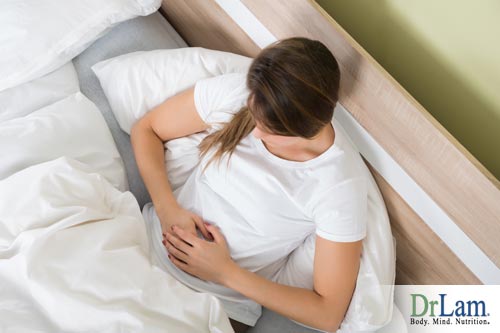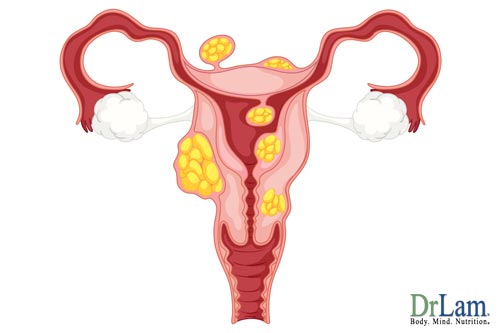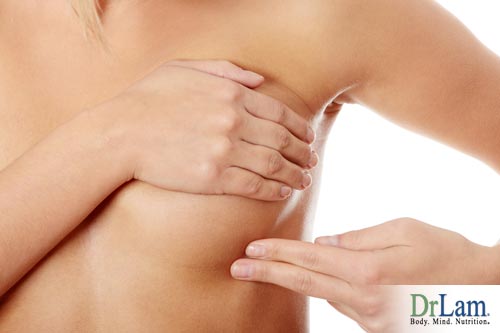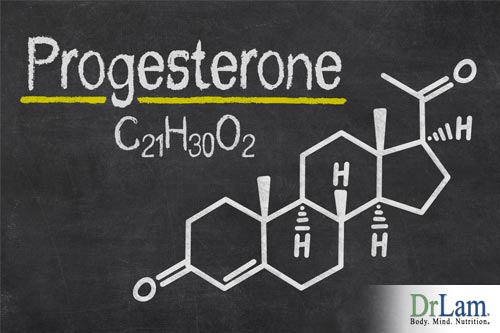 Are you one of the many women who wonder about estrogen dominance symptoms? If so, please read this article. We take many aspects of our health for granted, trusting our bodies to balance and regulate the functions necessary for living. Many people make token efforts to improve their health by engaging in some physical activity and watching their calories. To really take health into your own hands, however, you need to understand how the routine choices we make every day contribute to the picture of our health ten, twenty and even fifty years down the road. To start, let’s explore how estrogen dominance symptoms in a woman named Jane begin to develop from hormonal imbalances long before they ever give any outward sign.
Are you one of the many women who wonder about estrogen dominance symptoms? If so, please read this article. We take many aspects of our health for granted, trusting our bodies to balance and regulate the functions necessary for living. Many people make token efforts to improve their health by engaging in some physical activity and watching their calories. To really take health into your own hands, however, you need to understand how the routine choices we make every day contribute to the picture of our health ten, twenty and even fifty years down the road. To start, let’s explore how estrogen dominance symptoms in a woman named Jane begin to develop from hormonal imbalances long before they ever give any outward sign.
Little Jane stood by her mother's grave sobbing uncontrollably. Her mother had just passed away due to the dreadful breast cancer. As she placed some flowers on her grave, Jane could not understand fully why her mother had been taken away from her. After all, at the tender age of 10 years old, Jane could not fully comprehend the meaning of cancer and death or how estrogen dominance symptoms may end up impacting her life.
Jane relied on the rest of her family to bring her up. After her mother passed away, she managed to lead a normal and healthy childhood. At the age of 13, Jane entered puberty and had her first menstruation. Her body changed physically and she became more conscious of her appearance. By the time she reached eighteen years of age, she had a nice and fully developed body. She was very attractive and had many boyfriends.
Jane took birth control pills during the last two years of her high school. After she entered college, she took less of it as she became sexually less active. Due to her increased workload in college, Jane did not devote much time to exercise although she did go to the college gym for a simple work out with her girlfriends at least once a month. During her college years, her appetite was good and she began to put on a little weight as she craved for sweet desserts like chocolate, donuts and ice cream. She is not obese by any means.
Upon graduation, Jane found a job as an advertising executive in a large corporation in the city. To save traveling time, she moved from the suburb where she was living in the city. She bought a charming house that was quite near her workplace. Unfortunately, this house was rather old and needed to be periodically uninfested of termites.
A few years later, at the age of 25, she met her husband and was married. She was a good wife and kept her home tidy and neat. They maintain a garden, and to keep the flowers free of insects and pests, pesticides has to be used regularly.
 Jane became a workaholic. She worked an average of 12 hours a day. Her bosses recognized her talents and efforts and promoted her to middle management a few years later. Jane was ecstatic and felt a sense of achievement. She was only in her thirties and she already had a staff of 20 people under her. Her personal office had a panoramic view of the city.
Jane became a workaholic. She worked an average of 12 hours a day. Her bosses recognized her talents and efforts and promoted her to middle management a few years later. Jane was ecstatic and felt a sense of achievement. She was only in her thirties and she already had a staff of 20 people under her. Her personal office had a panoramic view of the city.
Jane's work was mainly sedentary. She had plenty of meetings to attend, both locally and overseas. Her job responsibilities included meeting important clients, business development as well as new strategic developments for her company.
Jane was grateful that despite her stressful life at the office, her health was good. Her hormonal history was actually quite mundane. When she was in her teens, her periods were regular and normal. It was only after her marriage that she would miss a period here and there, especially when she was under severe stress at work.
In the office, Jane drank 1 to 2 cups of coffee to keep herself awake and alert. She was told that coffee is not good, and over the years, her coffee intake has reduced, while she replace it with black tea. When she traveled, she would skip her regular exercise program, as she just simply could not afford the time. Gradually, she gained more weight, especially in the waistline due to the lavish meals rich in meat and alcohol during her course of entertainment with clients.
Being a career woman, Jane believed that she had managed her life well enough. Despite her long working hours, she still managed to get about five to six hours of sleep a night, and at least one weekend off a month to be with her family. Next to her room is a street lamp which also serve as a night light in her room as some of the light from that lamp shines into her room if the blinds are not drawn closed.
After five years of marriage, she gave birth to her first child at the age of 31. Following the birth, Jane's period started to become irregular. She began to notice the onset of slight headaches, bloating, cramps and felt irritable around the mid-cycle in her period. She ignored these symptoms as they did not really hurt her too much and continued to work just as hard. On days when she was unable to cope with the symptoms, she would resort to taking an aspirin or perhaps a few hours of sleep to recuperate.
Once, she visited her family doctor to find out if anything was amiss. He assured her that these were normal premenstrual symptoms (PMS). As the symptoms did not affect her greatly, he just told her to learn to live with them. The was never mention of estrogen dominance symptoms or other treatment options,
 At age 33, Jane gave birth to her second child, a daughter. She decided that two is enough. Her doctor suggested a simple procedure called tubal ligation where the fallopian tubes were tied. This was the best way for birth control, according to her doctors. She had it done and it was uneventful. With the passage of time, her "PMS symptoms" (or estrogen dominance symptoms) progressively gotten worse. When she is under stress, she would also miss a period here and there. She is a strong women, and she is able to continue her work schedule without much interuption. Once or twice she needed to take time off during the PMS to stay home and rest. More prominent hyper-pigmentation would appear on her face whenever she had her periods.
At age 33, Jane gave birth to her second child, a daughter. She decided that two is enough. Her doctor suggested a simple procedure called tubal ligation where the fallopian tubes were tied. This was the best way for birth control, according to her doctors. She had it done and it was uneventful. With the passage of time, her "PMS symptoms" (or estrogen dominance symptoms) progressively gotten worse. When she is under stress, she would also miss a period here and there. She is a strong women, and she is able to continue her work schedule without much interuption. Once or twice she needed to take time off during the PMS to stay home and rest. More prominent hyper-pigmentation would appear on her face whenever she had her periods.
Ten years down the road, as she continued to rise up the corporate ladder, her workload became more demanding. While she tries to reduce her coffee intake and switch to tea, her overall consumption of coffee has not reduced. She needed it to sustain her energy level. Exercise is seldom on her agenda. Fatty food is the norm as her entertainment schedule becomes more intense the higher she is in the corporate ladder.
Jane started to feel somewhat depressed and anxious. She became very conscious of her weight problem and enrolled herself in diet classes and even took diet pills. Despite her efforts to lose weight, she did not succeed. Her appetite grew and she felt hungry all the time. This happened even more often after a heavy meal high in carbohydrates. As age was probably catching up with her, she often felt fatigue or sleepy, especially after eating.
One day, at a regular checkup, the doctor told her that her blood cholesterol level was slightly on the high side. As her fasting blood sugar was fine, he did not prescribe her any medication. He just told her to relax and exercise more often.
Life continued but as the days went by, Jane's weight continued to creep up. She also noticed that there was more acne and facial hair on her face. After she celebrated her 40th birthday, her menstrual flow during her periods became heavier, and her premenstrual headaches and cramps became more severe.
Two years later, when an ultrasound of her uterus was carried out, the doctor told her that he could see a fibroid measuring 3 to 4 cm in diameter. She was only 42 years old. As her doctor said that this tumor was benign, she should just leave it alone unless she had heavy bleeding. Poor Jane was scared. She sought comfort from many of her good friends with the same problems and found that the advice given by her doctor appeared to be quite standard and sound.
 By the time she was 48, the fibroid was causing her to bleed heavily during her periods. As it was pressing on her bladder, she had problems urinating. Another ultrasound was then carried out. This time, the doctor said that her fibroid had grown to about 12 cm in diameter. Jane felt devastated. The doctor advised her to remove her uterus . Her ovaries were also removed. Her doctors had told her that as she was already approaching menopause, it did not matter whether she had her ovaries or not.
By the time she was 48, the fibroid was causing her to bleed heavily during her periods. As it was pressing on her bladder, she had problems urinating. Another ultrasound was then carried out. This time, the doctor said that her fibroid had grown to about 12 cm in diameter. Jane felt devastated. The doctor advised her to remove her uterus . Her ovaries were also removed. Her doctors had told her that as she was already approaching menopause, it did not matter whether she had her ovaries or not.
After the surgery, Jane became menopausal right away with symptoms such as hot flashes. She started on Hormone Replacement Therapy to ease her symptoms. Her doctor prescribed her synthetic estrogen in a drug called Premarin. He assured her that all would be well and that this estrogen would protect her heart and will prevent osteoporosis as well. Jane's hot flushes did improve with the synthetic estrogen. She was quite satisfied. She remained on this drug faithfully although she suffered some side effects such as fatigue and bloating
As the years went by, her libido started to decrease and depression began to creep into her life. She started having vaginal dryness and incontinence. Her skin became dry and she had more wrinkles on her face. She related all these to the doctor but once again, he assured her that these symptoms were very normal and that they were all part of the aging process. There was nothing much he could offer. He told Jane to straighten her thinking and accept the symptoms.
Jane accepted her doctor's analysis. After all, who would know better than her own doctor who had been treating her for so many years?
Jane tried to live on and think positively. She assured herself that she did not have to worry about cancer, heart attack, and osteoporosis as her uterus and ovaries had been removed. She was glad that she would definitely have no chances of getting cancer of the uterus or ovaries since they have been removed.
On a cold and frosty winter morning, Jane felt a lump in her left breast while she was bathing. She was very frightened and feared the worst. She told her husband who quickly rushed her to the hospital. There, she underwent an a complete examination again. Further biopsy confirmed the growth to be a malignant tumor. Jane screamed. She had breast cancer! Her nightmares were coming true! She is only 54.
The doctor then suggested radical surgery and possibly chemotherapy after that. Jane was in a state of shock. She had been a perfect patient, following everything the doctor requested. She had her uterus and ovaries removed. How could this be possible? Her doctor did not give her a good explanation. He said these things were all part of life. She just had to learn to accept her cancer. Jane and her family were told that immediate surgery was necessary to prevent further spread of cancer. She was in tears but she had no choice but to remove her breast. She is also advised to start chemotherapy.
 As she rested in the hospital after the surgery, Jane had much quiet time to reflect what really happened. Could she have prevented herself from getting breast cancer? She had followed the advice of her doctors so closely and faithfully. She had trusted her doctor so much. How was it possible that there were no warning signs to her?
As she rested in the hospital after the surgery, Jane had much quiet time to reflect what really happened. Could she have prevented herself from getting breast cancer? She had followed the advice of her doctors so closely and faithfully. She had trusted her doctor so much. How was it possible that there were no warning signs to her?
Jane was determined to find out what really happened to her. After she was discharged from the hospital, she surfed the internet, talked to her friends and many naturally oriented health care professionals, trying to piece together the facts of what really happened to her body. To her surprise, she discovered that her problem was a very common one. Many of her close friends had similar stories to tell, though they did not want to share about their problems in public initially. Jane then realized that what had happened to her was happening to many women around her age. There was a very clear and definite trend. She wished that her doctor had told her earlier so that she could take the necessary precautions.
Jane's story is very real indeed. There are millions of women sharing this tragic story around the world. It is like a case of repeated "classic" history. What seems to be a "normal" menstrual history at first eventually turns into a nightmare over a course of 30 years, like a sequel in a TV soap opera, consisting of:
Jane's story is classic in that it represents a chronic state of hormonal imbalance that has been utterly neglected over the years. Her PMS or otherwise referred to as estrogen dominance symptoms could have been calmed. Her fibroids could have been shrunken, hysterectomy prevented and her breast cancer could have been averted. In other words, Jane's suffering was "self-inflicted". She was an unfortunate victim of chronic hormonal imbalance and neglect.
Let us now dissect what really happened.
Were there any signs and symptoms of hormonal imbalances that Jane's body had been sending her over the past 30 years? The answer is a definite yes. Let us examine some of these in more detail.


Jane has been suffering from excessive estrogen all her life without her knowing it. Normally, estrogen is balanced in the body by progesterone. When there is excessive estrogen, the body is overwhelmed. In the imbalanced state, the body reacts with estrogen dominance symptoms.
When Jane was young, she did not think much about her body nor her hormones. After all, she has been able to have two children, and the symptoms she experienced does not sound very unusual at all.
 As Jane gets older, she did not realize that her progesterone is being depleted during the normal course of aging from age 35 onwards, and made lowered by the tubal ligation and removal of her ovaries. On the other hand, her estrogen level in her body, while also declining, is reducing at a much slower rate. Estrogen is not only produced in the ovaries. It is also produced in the adrenal glands as well as from her fat cells, even after her ovaries have been removed. Furthermore, she is feeding herself more estrogen from HRT and exposure to environmental estrogens encouraging estrogen dominance symptoms. The combination of progesterone deficiency and excessive estrogen is the root cause of her problems. She is flooding herself in a sea of estrogen without knowing it.
As Jane gets older, she did not realize that her progesterone is being depleted during the normal course of aging from age 35 onwards, and made lowered by the tubal ligation and removal of her ovaries. On the other hand, her estrogen level in her body, while also declining, is reducing at a much slower rate. Estrogen is not only produced in the ovaries. It is also produced in the adrenal glands as well as from her fat cells, even after her ovaries have been removed. Furthermore, she is feeding herself more estrogen from HRT and exposure to environmental estrogens encouraging estrogen dominance symptoms. The combination of progesterone deficiency and excessive estrogen is the root cause of her problems. She is flooding herself in a sea of estrogen without knowing it.
Progesterone and estrogen are opposing hormones. They serve to balance each other's physiological effect. When progesterone is low, estrogen dominance symptoms result. In Jane's case, she is further exposed to environment estrogens such as that contained in hormone laced poultry and beef, pesticides, and petro-chemical pollutants. Without knowing it, she has set herself up to be bathing in a sea of estrogen for many years.
PLAYING MEDICAL DETECTIVE, IT SHOULD BE CRYSTAL CLEAR NOW THAT JANE'S LIFE, FROM A HORMONE PERSPECTIVE, REFLECTED A PROGRESSIVE BUILD-UP OF ESTROGEN AND A CORRESPONDING GRADUAL DETERIORATION OF THE BODY'S ABILITY TO COPE WITH SUCH ESTROGEN LEVEL. THIS IS TYPICAL OF A CONDITION KNOWN AS ESTROGEN DOMINANCE.
Jane's body have been screaming out to Jane and warning her of the impending danger for years. The PMS, the missed periods, the increase in facial hair, the fibroids, are just a few of the many estrogen dominance symptoms she has over the years. Her body is unable to cope with excessive estrogen and is crying for help. Yet the warning signs are totally ignored, but simply suppressed.
Jane suffered a classic case of a series of conditions with the same common root cause - estrogen dominance. Excessive estrogen also has been linked to other illness, including thyroid dysfunction, chronic fatigue, auto-immune diseases, endometriosis, cystic breast, just to name a few.

As Jane contemplates whether to have chemotherapy now that she already had her breast removed, she is convinced that if her underlying hormonal imbalance is not rectified, chemotherapy is a stop-gap measure at best. Without rooting out the cause and rebalancing her hormones, she knows that the recurrence rate is high. She is convinced that chemotherapy cannot solve her hormonal imbalance and it may make her condition worse by weakening her body's immunity. Since chemotherapy is elective, she will be patient and wait.
Jane is not sitting still in the meantime. She decided to try the natural route first to control her estrogen dominance symptoms. She will undergo an intensive program to change her lifestyle and diet to reduce the excessive estrogen in her body and strengthen her immunity system. She will also monitor her progress with regular scans at the hospital.
Jane finds a natural-oriented medical physician with an orthomolecular oncology background to help her design a natural cancer treatment program in conjunction with her regular oncologist. This is the most important first step.
Her program to reduce her estrogen dominance symptoms consists of the following to the teeth an estrogen reduction protocol as well as breast cancer protocol specifically tailored to her type of breast cancer, her body weight, age, and her physical condition.
Some of the key components include:

To recap, Jane had a "normal" menstrual history. She had minor symptoms of PMS when she was in her mid-twenties. Her life was stressful with the occasionally missed period. She had a uterine fibroid at age 48 that was "treated" with total hysterectomy followed by hormone replacement therapy. At age 54, she was afflicted with breast cancer. Jane suffered from estrogen dominance symptoms and not knowing it. Excessive estrogen is killing her slowly. Jane is not alone.
In absolute terms, all of us living in a developed world are in effect bath in a sea of estrogen. The food we eat is laced with hormones. The air we breath are filled with undesirable hormone-like substances; the shampoos we use contain estrogen-like compounds; the plastics around us leeches estrogen into our system; the birth control pill or hormone replacement therapy further exacerbates estrogen dominance. This toxic and stressful environment of excessive estrogen will do the body tremendous harm, especially if left unchecked.
Jane's story is true and real. Similar stories are being told by millions of women around the world. While everyone's story is slightly different, the essence is the same - excessive estrogen will kill you. You don't have to suffer like Jane if you do your part to reduce your estrogen load. Experts are telling us that the majority of PMS, fibroids, and breast cancer can be prevented and reversed if early steps are taken to reduce estrogen load.
Both estrogen deficiency and estrogen dominance can show a similar type of symptoms such as hot flashes. If you are under the guidance of knowledgeable health professions, they will ask you more questions and then able to determine whether you are estrogen deficiency or estrogen dominance.

